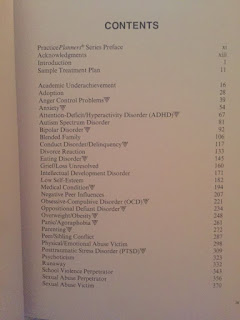Child Mind Institute
The item of interest I chose is a website dedicated to mental
health disorders and concerns that children and adolescences may encounter. The
website is the Child Mind Institute (https://childmind.org/).
The Child Mind Institute (CMI) is based out of New York. CMI conducts various
research students on mental health issues that occur in children and
adolescences.at any given time CMI has multiple clinical studies going on that
are led by their vast multi-disciplinary teams. For example, they currently
have two different studies related to autism occurring. One is Neuronal
Correlates of Autism in ADHD and Autism and the other is Brain and Behavioral
Changes Over Time in Young Children with Autism. Also, within the vast
realm of research conducted by CMI, they also have a platform called Data-Sharing
& Open-Source Initiatives where the researchers for CMI freely and openly
share their data as they obtain it instead of withholding it for publication.
In addition to research, CMI offers access to a plethora of
other resources some of which include:
o
Provides information about disorders, concerns,
medications and basic facts about disorders children can have.
o
Resources for parents, educators, and practitioners
to use to not only gain a better understanding and to identify signs of
disorders and concerns in children but also how to better support children with
different disorders.
o
Provides information about different disorders,
concerns, and current factors that can influence or relate to the mental health
of children.
o
Offers curriculum for schools and communities as
well as webinars for educators, parents, and professionals. Some resources may
cost money.
o
Provides an FAQ format with questions that other
parents have had about their children with different mental health
disorders that are answered by the multi-disciplinary team at CMI.
o
Survey platform where parents can check off
different items that relate to their child’s behavior. Gives insight into what
their child might have but does not diagnose any disorders.
o
Online platform that allows children with mental
health issues to share stories, videos, and to gain support from others with mental
health issues. UROK was designed to help de-stigmatize mental health issues
through encouraging others to share their stories.
Although this is not an exhaustive list of the resources or
information that is provided through the Child Mind Institute, these are resources
that I found to be unique and potentially beneficial. The information and
resources provided through this website allow for anyone on it to gain better
insight into the diverse mental health disorders and concerns that children and
adolescences face. I think that this website is a great tool to have in our
toolbox as school social workers as we could share the information on it with
our fellow educators at our schools and with the parents of the students that
we work with. This website could be especially useful to share with parents who
may not have a deep knowledge of mental health disorders in children. Parents and
children alike could utilize this website to gain a better understanding of
disorders especially if a student is being evaluated for special education
services (IEP or 504). With this website in our toolkits, we can continue to partake
in the home-school-community linkages that are a part of the school social work
practice model (Villarreal Sosa, Cox, & Alvarez, 2017).
Please explore this awesome website! https://childmind.org/
References
Villarreal Sosa, L.,
Cox, T., & Alvarez, M. (2017). School Social Work: National Perspectives on Practice in Schools. New York: Oxford University Press.
ISBN: 978019027842.





